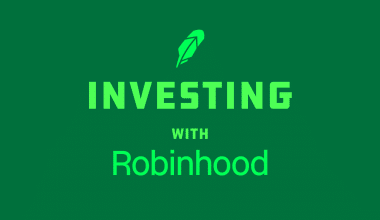Index investing is a refreshing alternative investment strategy that is rooted in simplicity and long-term growth. Over time, it has emerged as a beacon of stability and a pathway to steady wealth. The billions of dollars that investors invest in exchange-traded funds (ETFs) and index funds each year are proof of this. Of course, it didn’t come as a surprise because of the diverse benefits that passive and direct index investing offer investors. This includes cost-effectiveness, diversification, and peace of mind. Index investing mirrors the performance of a specific market index, such as the S&P 500 or the FTSE 100, thus giving investors the opportunity to benefit from the collective strength of the market as a whole rather than relying on the fortunes of individual companies. Join us to discover the incredible potential of index investing and how it can reshape your financial future.
What Is Index Investing?
Index investing, also known as passive investing or index tracking, is an investment strategy that aims to replicate the performance of a specific market index, such as the S&P 500 or the FTSE 100. Instead of actively selecting individual stocks or securities, index investors seek to match the returns of an entire market or a specific segment of the market.
The core idea behind index investing is that it’s difficult for most active fund managers to consistently outperform the market over the long term. By investing in a broad-based index fund or exchange-traded fund (ETF), investors can gain exposure to a diversified portfolio of stocks or other assets that make up the index. This approach avoids the need for constant buying and selling of securities based on individual investment decisions.
Index funds are designed to hold all, or a representative sample, of the securities in the underlying index. The portfolio composition is generally fixed and adjusted only when the index itself changes. This passive approach aims to match the index’s performance rather than attempting to beat it through active management.
Advantages of Index Investing
The following are some of the advantages of index investing:
- Diversification: Index funds provide broad exposure to a range of companies or assets, reducing the impact of individual company performance on the overall portfolio.
- Lower costs: Since index funds do not require active management, they generally have lower expense ratios compared to actively managed funds. This can result in higher net returns for investors over time.
- Simplicity: Index investing is straightforward, as investors only need to select the appropriate index fund or ETF and hold it for the long term. It does not require constant monitoring or decision-making.
- Consistency: Index funds aim to replicate the performance of the index, which provides investors with a consistent investment experience, minimizing surprises or unexpected outcomes.
Best Index Investments
The following are some of the best index investments available:
- Fidelity ZERO Large Cap Index
- Vanguard S&P 500 ETF
- SPDR S&P 500 ETF Trust
- iShares Core S&P 500 ETF
- Schwab S&P 500 Index Fund
- Shelton NASDAQ-100 Index Direct
- Invesco QQQ Trust ETF
- Vanguard Russell 2000 ETF
- Vanguard Total Stock Market ETF
- SPDR Dow Jones Industrial Average ETF Trust
Are Indexes a Good Investment?
Sure, they are. Indexes can be a good investment option for many individuals, but it ultimately depends on your specific financial goals, risk tolerance, and investment strategy.
How Do You Make Money With Index?
There are a few ways to potentially make money with index investments and they are outlined below:
#1. Dividend Income
Some indexes, particularly those tracking dividend-focused stocks, may provide dividend income to investors. Dividends are regular payments that businesses make to their shareholders from their profits. If the underlying stocks in the index pay dividends, the index fund or ETF may pass on those dividends to investors. Dividend income can be a source of cash flow in addition to potential capital appreciation.
#2. Reinvested Dividends
Instead of taking the dividend income in cash, you can choose to reinvest the dividends back into the index fund or ETF. Reinvesting dividends allows you to purchase more shares of the index, increasing your ownership stake. Over time, this can potentially compound your investment returns.
#3. Capital Appreciation
The primary way to make money with index investments is through capital appreciation. If the index you have invested in increases in value over time, the value of your investment will also increase. This can happen as a result of the underlying stocks or assets within the index performing well. However, it’s important to note that the value of an index can also go down, leading to potential losses.
#4. Dollar-Cost Averaging
Another strategy for making money with index investments is through dollar-cost averaging. This involves investing a fixed amount of money at regular intervals, regardless of the index’s price. When the index is at a higher price, your fixed investment amount will buy fewer shares, and when the index is at a lower price, your fixed investment amount will buy more shares. Over time, this strategy can help smooth out the impact of market volatility and potentially lead to favorable long-term returns.
How Do I Start Investing in an Index?
To start investing in an index, you can follow these general steps:
#1. Set Investment Goals
Determine your investment objectives, such as saving for retirement, buying a home, or building wealth. Clarify your time horizon, risk tolerance, and the amount of money you are willing to invest.
#2. Research and Choose an Index
Identify the index that aligns with your investment goals. Commonly known indexes include the S&P 500, Dow Jones Industrial Average, Nasdaq Composite, and Russell 2000. Research the index’s historical performance, underlying holdings, and any specific requirements or strategies associated with it.
#3. Select an Investment Vehicle
Decide whether you want to invest in an index mutual fund or an exchange-traded fund (ETF) that tracks the chosen index. Both options have their advantages and disadvantages. Investment companies typically manage mutual funds, whereas ETFs trade on stock exchanges like individual stocks.
#3. Choose a Brokerage Account
Open an account with a reputable brokerage firm that offers access to the index fund or ETF you wish to invest in. Consider factors such as fees, account minimums, customer service, and the platform’s ease of use. Popular brokerage platforms include Charles Schwab, Fidelity, Vanguard, TD Ameritrade, and Robinhood.
#4. Fund Your Account
Deposit the amount of money you want to invest into your brokerage account. Most brokerage firms provide multiple funding options, including bank transfers, wire transfers, and electronic fund transfers (EFTs).
#5. Place Your Trade
Once your account is funded, search for the specific index fund or ETF you want to invest in using your brokerage’s platform. Enter the investment amount and place your trade. Pay attention to any transaction fees, bid-ask spreads, and the current market price of the fund or ETF.
#6. Monitor and Rebalance
After investing in the index, regularly monitor your investment and review its performance. Consider rebalancing your portfolio periodically to maintain your desired asset allocation and risk profile. Rebalancing involves adjusting your holdings to bring them back in line with your target allocation.
#7. Stay Informed
Stay updated on market news, economic indicators, and any changes that could impact your index investment. However, avoid making impulsive investment decisions based on short-term market fluctuations. Focus on your long-term investment strategy.
S&P 500 Index Investing
S&P 500 index investing is an investment strategy where individuals or institutions buy shares of a fund that replicates the performance of the S&P 500 index. The S&P 500 is a market-cap-weighted index that includes 500 large and well-established companies listed on stock exchanges in the United States. These companies represent various sectors of the U.S. economy and are considered to be leaders in their respective industries.
When you invest in an S&P 500 index fund or exchange-traded fund (ETF), you are essentially buying a diversified portfolio that includes a proportional share of each of the 500 companies in the index. The fund aims to mirror the performance of the S&P 500, providing investors with exposure to the overall U.S. stock market.
S&P 500 index investing is popular among investors seeking a straightforward and cost-effective way to participate in the growth potential of the U.S. stock market. It is considered a core component of many diversified investment portfolios. However, it’s important to remember that all investments carry risks, and the value of an S&P 500 index fund or ETF can fluctuate based on the performance of the underlying companies in the index. As with any investment strategy, it’s essential to align your investment choices with your financial goals and risk tolerance. Consulting with a financial advisor can also help you make informed decisions based on your circumstances.
Characteristics of S&P 500 Index Investing
The following are some of the characteristics of S&P 500 index investing:
#1. Diversification
By investing in the S&P 500, you are spreading your investment across a broad range of companies from different sectors. This diversification helps reduce the impact of poor performance in individual stocks.
#2. Passive Investment Approach
S&P 500 index investing is a passive investment strategy. Unlike active investing, where fund managers try to outperform the market through stock picking and timing, passive investing seeks to replicate the performance of the index without frequent buying or selling of securities.
#3. Low Costs
S&P 500 index funds and ETFs generally have lower expense ratios compared to actively managed funds. This is because they do not require extensive research or active trading, leading to reduced costs for investors.
#4. Market Performance
The S&P 500 index is often used as a benchmark for the overall performance of the U.S. stock market. Historically, the market has shown an upward trend over the long term, though there can be short-term volatility and downturns.
#5. Accessibility
S&P 500 index funds and ETFs are widely available and accessible to individual investors. They can be purchased through brokerage accounts, retirement accounts, and other investment platforms.
Direct Index Investing
Direct index investing refers to a strategy where investors directly purchase and hold individual stocks or securities that replicate a specific index. This simply means that instead of investing in index funds or exchange-traded funds (ETFs), investors build and manage their portfolios by buying the individual securities that make up the index. Direct index investing can be suitable for investors who have a deep understanding of the market, enjoy research and analysis, and prefer a hands-on approach to portfolio management. It allows for customization and potential tax advantages but requires careful consideration of costs and diligent monitoring. Consulting with a financial advisor can provide guidance and help determine if direct index investing aligns with your financial goals and risk tolerance.
Before you venture into direct index investing, there are certain things you need to be familiar with. The following are some of them:
#1. Customization
Direct index investing allows investors to customize their portfolios according to their preferences. They have the flexibility to choose specific stocks or securities within the index based on factors like sector allocation, company size, or individual preferences.
#2. Cost Considerations
Direct index investing may involve higher costs compared to investing in index funds or ETFs. Investors need to consider trading fees, bid-ask spreads, and potential tax implications when buying and selling individual securities. It’s important to carefully assess the costs involved and evaluate whether the benefits outweigh the expenses.
#3. Diversification
While direct index investing allows customization, it requires careful attention to achieve adequate diversification. Investors need to select a broad range of stocks or securities across different sectors and industries to effectively diversify their portfolios and manage risk.
#4. Research and Monitoring
Direct index investors are responsible for researching and monitoring the individual securities within their portfolio. They need to stay updated on company news, earnings reports, market trends, and other relevant information that can impact the performance of their holdings. Regular monitoring is essential to making informed investment decisions.
#5. Rebalancing
Similar to index fund investing, direct index investors may need to rebalance their portfolios periodically. Rebalancing involves adjusting the weightings of individual securities to align with the desired index composition. It requires selling overperforming securities and purchasing underperforming ones to maintain the intended allocation.
#6. Active Management
Direct index investing can be considered a form of active management since investors actively select and manage the individual securities in their portfolios. It requires a higher level of involvement, investment expertise, and time commitment compared to passive index investing.
#7. Tax Efficiency
Direct index investing may offer potential tax advantages. Investors have more control over tax management strategies like tax-loss harvesting, which involves selling securities at a loss to offset capital gains and potentially reduce taxable income. Direct index investors can also implement tax-efficient asset location strategies to optimize their tax liability.
Do Rich People Invest in Index Funds?
Sure, they do, a good number of rich people do invest in index funds. Index funds are a popular investment option for individuals across different income levels, including wealthy individuals.
Passive Index Investing
Passive index investing, also known as index fund investing or passive investing, is an investment strategy that aims to replicate the performance of a specific market index, such as the S&P 500 or the FTSE 100. Instead of actively picking and choosing individual stocks, passive investors seek to match the returns of a given index by investing in a diversified portfolio of securities that mirrors the index’s composition.
The main tool used in passive index investing is an index fund. An index fund is a type of mutual fund or exchange-traded fund (ETF) designed to track the performance of a specific index. These funds hold a portfolio of stocks, bonds, or other assets that mimic the index’s holdings and weightings. The fund manager’s goal is to closely replicate the index’s returns rather than outperform it through active stock selection. Passive index investing is a popular and effective investment strategy for those seeking broad market exposure, simplicity, and lower costs. It can be an excellent long-term strategy for investors who believe in the overall growth of the market and want to minimize the risks associated with individual stock selection.
Index Investing Strategy
Index investing, also known as index-based investing or index tracking, is an investment approach that involves constructing a portfolio to replicate the performance of a specific market index. The strategy aims to achieve returns that closely mirror the overall movement of the chosen index rather than attempting to outperform it through active management. Index investing is popular among investors who prefer a systematic, low-cost, and less time-intensive strategy when it comes to investing. It offers benefits such as diversification, simplicity, and the potential to match the market’s overall performance. However, it’s important to note that index investing may not outperform the market since it aims to replicate the index rather than beat it. Active investing strategies involve attempting to outperform the market through active stock selection and market timing.
If you have an interest in index investing strategies, then you must first consider the following:
#`1. Index Selection
The first step in implementing an index investing strategy is choosing the appropriate index to track. Indexes can represent various markets, sectors, or asset classes. Common examples include the S&P 500, Dow Jones Industrial Average, FTSE 100, and MSCI World Index. The selection depends on an investor’s goals, risk tolerance, and desired exposure.
#2. Index Fund or ETF
To gain exposure to the chosen index, investors typically invest in index funds or exchange-traded funds (ETFs) specifically designed to track the index’s performance. These funds hold a diversified portfolio of securities that closely mimic the index’s composition and weightings. They aim to replicate the returns of the index by buying and holding the same securities in the same proportions.
#3. Diversification
Index investing offers built-in diversification since the underlying index is usually composed of a broad range of securities. By investing in an index fund or ETF, investors gain exposure to a diversified basket of stocks, bonds, or other assets, reducing the impact of any single security’s poor performance.
#4. Cost Efficiency
Index investing is generally cost-efficient compared to active management. Since index funds and ETFs aim to replicate the index’s performance rather than engage in extensive research or active trading, they have lower expense ratios. This is because they require less frequent trading, fewer portfolio adjustments, and lower management fees.
#5. Long-Term Focus
Index investing is often considered a long-term investment strategy. It is based on the belief that over the long run, the market tends to rise and deliver positive returns. By holding an index fund or ETF for the long term, investors can capture the overall growth of the market and benefit from compounding returns.
#6. Market Exposure
Index investing provides broad market exposure, as the index typically represents a specific market or sector. This approach allows investors to participate in the overall performance of a particular market rather than relying on the success of individual stocks or securities.
#8. Passive Management
Index investing is a passive investment strategy, meaning it does not involve frequent buying and selling of securities. Once the index fund or ETF is established, it requires minimal ongoing management. The holdings are adjusted periodically to reflect changes in the index’s composition.
- 17 TOP INDEX FUNDS 2023:(Updated)
- DIVIDEND INDEX FUNDS: Best High Index Funds Fidelity & Vanguard
- Investing For Beginners: Easy Guide For 2023
- GOOD COMPANIES TO INVEST IN 2023
- Mutual Funds vs Index Funds: Difference, Formulas & Examples
References
- bankrate.com
- nerdwallet.com






